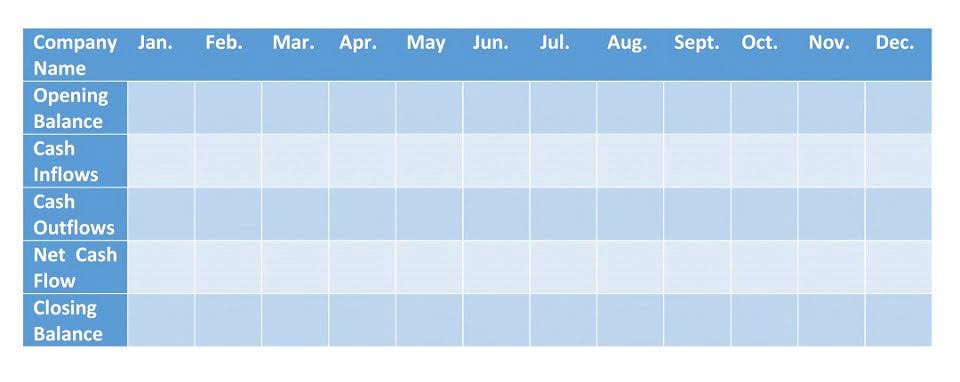
Larger values indicate that the company has more assets relative to liabilities, and that the company is worth more money. Thoroughly reviewing the statement of shareholders’ equity can provide insight into areas of the company that are increasing or decreasing equity each year. The statement of shareholder’s equity details the change in shareholder equity, or ownership value, over the specified time period. As with the other statements, the time period for the statement of shareholders’ equity is typically one year.
Prior to teaching at Ouachita Baptist University, he was a faculty member at the University of North Texas, Texas Christian University Austin College, and the University of Arkansas. You can access this textbook for free in web view or PDF through openstax.org, and for a low cost in print. Instructors also have the option of creating a customized version of their OpenStax book. The custom version can be made available to students in low-cost print or digital form through their campus bookstore. Visit the Instructor Resources section of your book page on openstax.org for more information.
Financial Accounting
GAAP compliance is ensured through an appropriate auditor’s opinion, resulting from an external audit by a certified public accounting (CPA) firm. GAAP is a combination of authoritative standards set by policy boards and the commonly accepted ways of recording and reporting accounting information. GAAP covers such topics as revenue recognition, balance sheet classification, and materiality. Principles of Accounting is designed to meet the scope and sequence requirements of a two-semester accounting course that covers the fundamentals of financial and managerial accounting. Each chapter opens with a relatable real-life scenario for today’s college student. Thoughtfully designed examples are presented throughout each chapter, allowing students to build on emerging accounting knowledge.

Using Synder, you can always track and record how much money you have on hand and how much you’ll need to spend in the future due to some circumstances. The software will help you make vital decisions based on your current cash standing. The software provides assistance and insurance that you’ll pay the right amount of taxes, especially during the accounting busy season. If you want to avoid overpaying, you need to have an accurate record and calculation of payments, which may be hard for a person, but not for accounting software with automation. It provides a unique opportunity to enhance the way your software works without any additional effort of entering an endless stream of numbers.
Matching principle
Financial accounting guidance dictates how a company recognizes revenue, records expenses, and classifies types of expenses. Standardized accounting principles date all the way back to the advent of double-entry bookkeeping in the 15th and 16th centuries, which introduced a T-ledger with matched entries for assets and liabilities. Some scholars have argued that the advent of double-entry accounting practices during that time provided a springboard for the rise of commerce and capitalism. The ultimate goal of any set of accounting principles is to ensure that a company’s financial statements are complete, consistent, and comparable. A statement of cash flow details a company’s income and debt over a period of time (usually a year).

Various business entities exist, including sole proprietorships, partnerships, corporations, and government agencies. A sole proprietorship is the most troubling business entity in the economic entity principle because a proprietor routinely blends business and personal transactions. Managerial accounting uses operational information in specific ways to glean information.
Materiality principle
For this type of material, no significant changes typically occur; therefore, it would be easy to quickly update with new figures. Most of this material is the founding blocks of accounting so it could be updated easily. I didn’t identify any errors other than the ones identified by previous
reviewers. I love the fact that chapters are broken into typically 3-7 page sections. Students can find odd-numbered answers to Multiple Choice and Questions in the Answer Key. Answers to all odd and even-numbered Multiple Choice, Questions, Exercises, Problems, and Thought Provokers are provided only to instructors in the Instructor Answer Guide via the Instructor Resources page.
- Alongside “basic” accounting principles, there are the generally accepted accounting principles or GAAP.
- Therefore, most companies and organizations in the U.S. comply with GAAP, even though it is not a legal requirement.
- GRI Standards focus on the economic, environmental, and social impacts of a company in relation to sustainable development, which is of interest to a broad range of stakeholders, including investors.
- When recording each business transaction, it should be assigned to its respective entity (government agency, corporation, etc.).
The full disclosure principle is incredibly important even though it’s a little commonsensical. Basically, it states that any important information necessary to understand a financial statement should also be included within the financial statement itself, or at least in its footnotes. This prevents accountants and business owners from having to look financial accounting through multiple financial documents to understand a single paper. For example, a company might be involved in a lawsuit with another company that is demanding lots of money. Financial statements should be prepared to state clearly that the company can or cannot defend itself so that accountants and lawyers don’t have to make further inquiries.

